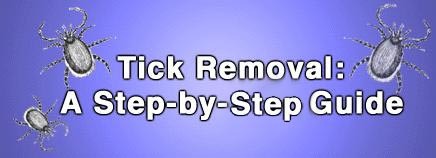
Boy, your child’s freckles really stand out in the sun — but wait, that one looks like it’s moving! It isn’t a freckle at all. It’s a tick. What should you do?
First, don’t panic. It’s true that Lyme disease is the most common tick-borne disease in the United States, but your child’s risk of developing Lyme disease after being bitten by a tick is very low.
To be safe, though, you’ll want to remove the tick as soon as possible because risk of infection increases between 24 to 48 hours after the tick attaches to the skin.
What to Do
Step 1: Use tweezers to grasp the tick firmly at its head or mouth, next to the skin.
Step 2: Pull firmly and steadily until the tick lets go of the skin. Do not twist the tick or rock it from side to side. If part of the tick stays in the skin, don’t worry. It will eventually come out on its own.
Step 3: Release the tick into a jar or zip-locked bag in case you want to have it identified later on.
Step 4: Wash your hands and the site of the bite with soap and water.
Step 5: Swab the bite site with alcohol.
Never use petroleum jelly or a hot match to kill and remove a tick. These methods don’t get the tick off the skin, and can cause the insect to burrow deeper and release more saliva (which increases the chances of disease transmission).
Next Steps
Call your doctor after the tick has been removed to find out if your child should be evaluated. In certain cases, a doctor will prescribe antibiotics if a child is at high risk of developing Lyme disease.
Call the doctor right away if your child develops a red-ringed rash or if the skin becomes red and irritated. Also call if your child has flu-like symptoms, joint pain or a swollen joint, or facial paralysis. Although other conditions can cause similar symptoms, you’ll want to have your child evaluated early on so that if it is Lyme disease, treatment can begin as soon as possible.

